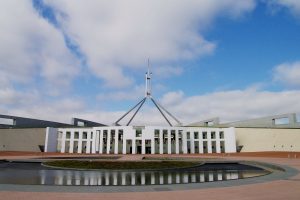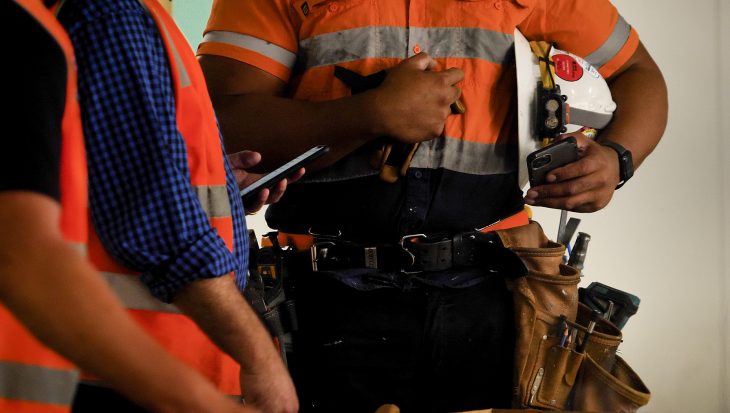Governments in Australia are leading a dramatic shift in how they procure goods and services, embedding social procurement into their own supply chain practice and demanding similar of anyone who wants to work with them. This, in turn, is leading to businesses, of all sizes, adopting social procurement strategies and identifying ways they can adapt their business to include the creation of social benefits.
The social procurement space is years ahead of other approaches to creating social value, such as commissioning for outcomes and social impact bonds.
The Victorian and Queensland governments are leading this change in Australia with highly detailed targets for social procurement growth and guidance on how to go about it.
The Victorian Government wants to see the social benefits of their procurement benefiting those in most need in Victoria. Ensuring that where feasible, contracts for goods and services are delivered in Victoria by Victorian-based companies and enterprises.
Similarly, the Queensland Government has identified key target groups which they hope will benefit from their focus on social procurement. The policy commits the Queensland Government to:
- increase government procurement with Aboriginal and Torres Strait Islander businesses to three per cent of addressable spend by 2022
- requirement to invite regional and Queensland suppliers to quote or tender can be met by asking local social enterprises to tender for work, thereby addressing social needs as well.
- includes a commitment to increase government spending with genuine, quality social enterprises and to ensure that all procurement complies with the Disability Discrimination Act 1992
Benefits of social procurement

So, what are the potential benefits of social procurement for government and society:
- Social inclusion
- Employment and training
- Local sustainability
- Diversity and equality
- Fairtrade
- Service innovation
Social procurement can take different forms, which can be loosely grouped into direct and indirect approaches. Direct approaches involve purchasing from “for-social-benefit entities”, such as not-for-profits, social enterprises, Australian Disability Enterprises, Aboriginal-owned businesses, social businesses, worker or community-owned cooperatives and others with a focus on social outcomes.
Indirect approaches include social clauses in contracts with private sector providers, screening supply chains for ethical considerations, as well as embedding social enterprise in the supply chain of larger contracts (i.e. as sub-contractors). (Beyond Value for Money Social Procurement for Victorian Local Government (2017)
While these benefits and forms of social procurement are unquestionably positive for local economies and communities, it can be hard for those taking their first steps down this path, or small businesses, to understand if the benefits outweigh the additional time to implement a new approach or change to another supplier.
We know through our work here at the ASVB, that there are large wellbeing benefits attached to some of the focus areas of social procurement.
Increasing your social value contribution

Here are two examples where outlining social outcomes in your procurement can increase the social value your business is creating in the community you operate in.
The first example is where the procurement team request that an organisation who wins a tender bid will train a defined number of employees each year to gain Certificate I and Certificate II qualifications. They may already be doing this ad-hoc but not with a contractual obligation or consistent numbers each year. This simple change will ensure their enrolment program for staff becomes standardised and guarantees that this number of people will get the opportunity to complete these qualifications.
Through our value bank, we know this has a large social value attributed to it in terms of wellbeing uplift for the individual. If we wanted to maximise the social value from this training clause in the tender document, we could also stipulate that those who complete the qualifications are young people in the 16-25-year-old range. This is because the wellbeing uplift and associated social value for this outcome of completing training are of the highest value to young people.
The second example would be where the tender asked for a focus on targeting certain groups to join their workforce to deliver the goods or services in the contract. Our analysis shows there is a significant increase in the wellbeing uplift and social value attributed to gaining full-time roles as opposed to casual roles. Secondly, for people with an injury, illness or disability, the increase in wellbeing and attributed social value is higher when they move into permanent part-time or full-time employment. By employing the same number of people but targeting who takes on these roles the overall social value created can be increased.
These two examples outline how slight changes in the contractual obligations can have dramatic effects on the amount of social value being created by an organisation or government procuring goods and services.
Conversely, where there are no social procurement stipulations in a tender, you can gain a competitive edge against your competition by including the social outcomes you will create in addition to the required goods or services. This will make your bid stand out, with your social impact being a major point of difference, above and beyond pure value for money.
Tendering for government contracts
Businesses who wish to tender for government contracts, now, and in the future, need to address social value clauses and targets set out in the tender process. Failure to address these requirements or being unable to clearly articulate how they will go about delivering social benefits will be at a competitive disadvantage in the tendering process. This does not mean you are guaranteed to win contracts ahead of competitors just because you outline your ability to deliver on social clauses and targets, as it is only one part of the procurement matrix and scoring process. However, it does provide a clear competitive advantage where two companies are equally matched on price, quality and capacity to deliver. And of course, the next step on the journey includes competing on the amount of social value your bid will create!





